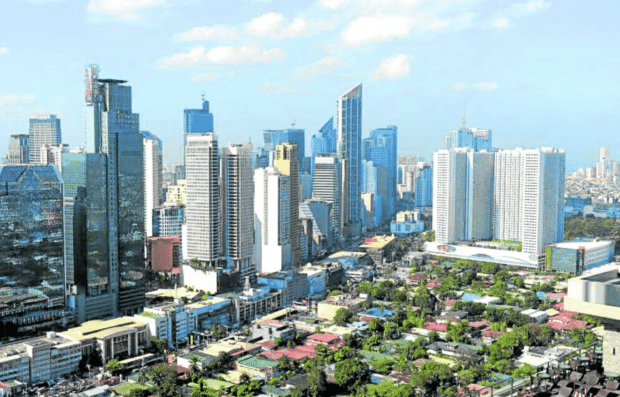
(TED ALJIBE/AFP)
The Philippines’ possible exit from the Financial Action Task Force’s (FATF) ‘gray list’ and greater push for sustainability are seen to help buoy the property sector. Tempered inflation and lower interest rates are also likely to help revive the Philippine economy, which posted a lower-than-expected pace of expansion in 2024.
Gray list exit a plus for economy, property
Top officials of the Bangko Sentral ng Pilipinas (BSP) said the Philippines is on track to exiting the FATF “gray list” by February. The Philippines has been on the list since June 2021.
Colliers View:
Exit from the gray list is important if the Philippines wants to attract more job-generating, multi-billion foreign direct investments, including high-value manufacturing players that positively influence industrial space take-up in the country’s major corridors. We see higher remittances also fueling retail, residential, and leisure demand across the country. This will benefit property firms with massive footprint in these property sub-segments.
Sustainability ranks high on office tenants’ scorecard
More outsourcing companies are now looking for sustainable and healthy office spaces. Landlords are taking advantage of this demand by building LEED- and WELL-certified office towers. In Metro Manila, green and healthy office space will likely dominate supply starting 2025.
Colliers View:
Multinational corporations need to walk the talk–hence a more pronounced take-up of green and healthy office space. Of the 1.2 million sqm of office space to be completed in Metro Manila from 2025 to 2027, about 60 percent currently have or will likely have green building certifications. Colliers believes that sustainable offices are likely to stoke demand and resuscitate take-up for offices beyond 2025. Office vacancy in Metro Manila is nearing 20 percent, and incorporating sustainable features will be a key differentiating factor.
GDP growth disappoints
The Philippine Statistics Authority (PSA) announced that the country’s gross domestic product (GDP) grew by 5.2 percent in the fourth quarter of 2024, bringing the full-year growth to 5.6 percent. This is below the government’s target of between 6 and 6.5 percent.
Colliers View:
Growth in personal consumption slowed to 4.8 percent in 2024 from 5.6 percent in 2023. This was somehow offset by faster growth in investment and government spending. The latter is projected to grow further given that 2025 is an election year. We see sustained growth for personal consumption given the slower inflation and BSP rate cuts. Lower interest rates are seen to support private investments while the government’s infrastructure outlays leading to the midterm polls in May are seen to raise government spending.
Multilateral aid agencies are projecting the Philippines to record the second fastest GDP growth in Asean in 2025 and this should support the property market’s rebound for the next 12 months. We see retail, hotel, and residential submarkets benefiting from the Philippine economy’s dynamic expansion in the near term.
Inflation within BSP’s target
Economists had forecast the country’s inflation to be within the BSP’s target range of between 2 and 4 percent. Based on BSP’s December 2024 Survey of External Forecasters (BSEF), analysts said inflation likely hovered at 3.3 percent in 2024. Inflation remains tempered due to lower prices of rice and oil. BSP expects global crude oil prices to further drop due to projected weaker global demand and global oversupply.
Inflation is starting to cool down and this provides impetus for the BSP to further cut basic interest rates. This is important in stoking personal consumption and enticing firms to expand operations which should result in greater job generation. We see eventual reduction in mortgage rates with the Monetary Board already reducing rates by 75 bps to 5.75 percent. This is pivotal in raising residential demand, especially for the mid-income segment (P3.6 million to P12 million a unit) in Metro Manila. Despite this, interest rates remain elevated, and we only see a reprieve on mortgage rates towards the latter half of 2025.


